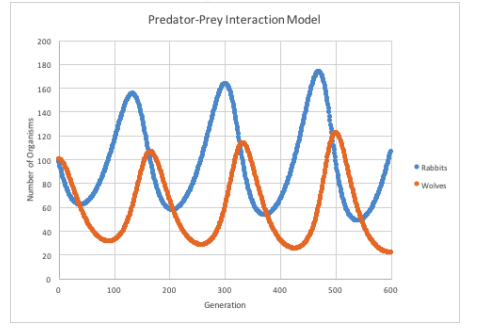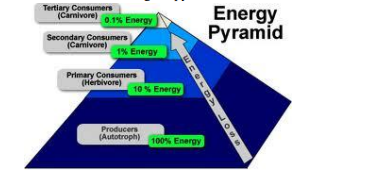A. Behavior
➢ Instinct
- Inborn, unlearned behavior
- Sometimes triggered by environmental signals called releasers
- Some only last part of an animal’s life and are gradually replaced by a learned behavior
- Fixed action pattern
■ Not simple reflexes, but not conscious decisions
➢ Learning
- Change in a behavior brought about by experience
- Imprinting
■ Recognize mother and follow her
● If mother is absent, newborns will accept the first moving object as their mother
■ Used to recognize members of same species
■ Occurs during critical period–window of time when the animal is sensitive to certain aspects of the environment - Classical Conditioning
■ Aka associative learning
■ Associates a stimulus with a reward/punishment and acts accordingly - Operant Conditioning
■ Aka trial-and-error learning
■ Animal learns to perform an act in order to receive a reward
■ Of behavior is not reinforced, conditioned response will be lost (extinction) - Habituation
■ Animal learns not to respond to a stimulus
■ If an animal encounters a stimulus over and over, the response will gradually lessen and may disappear
➢ Circadian rhythm=daily internal clock
B. How Animals Communicate
➢ Use chemical/visual/electrical/tactile for communication, esp. To influence mating and social behavior
➢ Social Behavior
- Agonistic
■ Aggressive behavior as a result of competition for resources - Dominance hierarchies
■ Often The most dominant male will become the leader of the group and will usually have best picking of food and females in the group
■ Once the hierarchy is established, competition and tension within the group is reduced - Territoriality
■ Common behavior when food/nesting sites in short supply - Altruistic Behavior
- Unselfish behavior that benefits another organism in the group at the individual’s expense
➢ Symbiotic Relationships
- Mutualism
■ Both organisms benefit - Commensalism
■ One benefits, other is unaffected - Parasitism
■ One benefits, the other is harmed
➢ Plant Behavior
- Photoperiodism
■ Plants flower in response to changes in the amount of daylight/darkness they recieve - Tropism
■ Turning in response to a stimulus
■ Phototropism
● Bend towards light
■ Gravitropism
● Stems: negative gravitropism (grow away from gravity)
● Roots: positive gravitropism (grow into earth)
■ Thigmotropism
● How plants respond to touch
● Ex. ivy grows around a post
C. Ecology
➢ ecology=study of living things in their environment
➢ Biosphere
- Entire part of the earth where living things are
- Divided into biomes divided into biomes
■ Massive areas classified by climate and plant life
➢ Ecosystem
- Interaction of living and nonliving things
- Biotic vs. abiotic factors
➢ Community
- Group of populations interacting in the same area
- Each organism has its own niche–its own position/function in a community
- When two organisms occupy the same niche, they will compete for resources within that niche
- Food chain
■ Describes The way different organisms depend on one another for food - 4 levels to food chain
■ Producers
● Aka autotrophs
● Make their own food via photo/chemosynthesis
● Primary productivity - Gross productivity from photosynthesis cannot be measured because cellular respiration is occuring at the same time
- Net productivity measures organic materials after photosynthetic organisms have taken care of their own cellular energy needs
■ Calculated by measuring oxygen production in light when both photosynthesis and cellular respiration are occuring
● Produce all available food
● Make up first trophic level
● Possess highest biomass and greatest numbers
■ Consumers
● Aka heterotrophs
● Digest carbs of prey into carbon, hydrogen and oxygen in order to create energy and organic substances
● Get their energy from the things they consume
● Primary consumers feed directly on producers
○ Aka herbivores
○ Make up second trophic level
● Secondary consumers feed on primary consumers
○ Make up third trophic level
● Tertiary consumers feed on secondary consumers; make up fourth trophic level

■ Decomposers
● Break down organic matter into simple products
● Ex. fungi/bacteria
➢ Population
- Group of individuals that belong to the same species and that are interbreeding
➢ Keystone species
- If removed from ecosystem balance will be undone very quickly
➢ Dominant species
- Most abundant/highest biomass
- Affect the occurrence and distribution of other species
➢ $10% $rule
- In a food chain, only about $10%$ of energy is transferred from one level to the next
■ Other $90% $used for respiration/digestion/running/etc, - Energy flow/biomass/numbers of members within an ecosystem can be represented in an ecological pyramid

➢ Buildup of toxins
- Downside of food pyramids is that when the consumers at the top eat something beneath the,. It is like they are eat the thing and thing it ate and the thing it ate, etc.
■ If there is a toxin in the environment, consumers are getting the most of it because it becomes more concentrated at each level
D. Population Ecology
➢ When examining a population, look at:
- Size
- Density
- Distribution patterns
- Age structure

➢ Population growth
![]()
![]()
➢ Carrying capacity
- Maximum number of individuals a habitat can support
- Most Populations do not reach carrying capacity due to limiting factors
➢ Density independent vs. Density independent factors
- Affect population regardless of size vs. effects depend on population density
E. Exponential Growth
➢ Exponential growth occurs when a population is in an ideal environment
➢ Logistic growth occurs when a population is restricted; S-shaped curve

➢ R-strategists
- tend to thrive in areas that are barren or uninhabited
- Reproduce as quickly as possible
➢ K-strategists
- Organisms are best suited for survival in stable environments
- Tend to be large animals
- Long lifespans
- Tend to produce few offspring
- Don’t ave contend with competition from other organisms
F. Ecological Succession
➢ Ecological succession refers to the predictable procession of plant communities over a relatively short period of time
➢ Primary succession
- Process of ecological succession in which no previous organisms have existed
- sere
■ 1. Lichens (pioneer organisms)
■ 2. mosses/ferns
■ 3. Rough grasses
■ 4. Evergreen trees
■ 5. Deciduous trees

- Final community=climax community
➢ Secondary succession
- Same as primary, but starts off with grasses instead of lichens
- Occurs when habitat/community has been destroyed/disrupted
G. Human Impact on the Environment
➢ Greenhouse effect
- Atmospheric concentration of $\mathrm{CO}_2$have increased due to the burning of fossil fuels and forests, contributing to the warming of the Earth
- Higher temperatures cause ice caps to melt, flooding
- Can change precipitation patterns, plant/animal populations/agriculture
➢ Ozone depletion
- Caused by pollution $\text { n (ex. CFCs) }$
- Ozone$\left(\mathrm{O}_3\right)$ forms when UV radiation reacts with $\mathrm{O}_2$
- Ozone protects earth from excessive UV radiation
- Loss can increase genetic defects and cancer
➢ Acid Rain
- Burning of fossil fuels produces pollutants such as $\mathrm{SO}_2$and $\mathrm{NO}_2$
- When these compounds interact with water in clouds, acids are created
- Acidic rain causes lower pH in aquatic ecosystems, damaging water systems, plants, and soil, and kills fish
➢ Desertification
- When land is overgrazed by animals, it turns grasslands into deserts and reduces the available habitats for organisms
➢ Deforestation
- When forests are cleared (esp. By slash and burn methods), erosion, floods, and changes in weather patterns can occur
➢ Pollution
- Toxic chemicals in environment
- Biomagnification
➢ Reduction in biodiversity
- As different habitats have been destroyed many plants and animals have become extinct
- Some of these plants could have provided us with medicines and products that may have been beneficial
